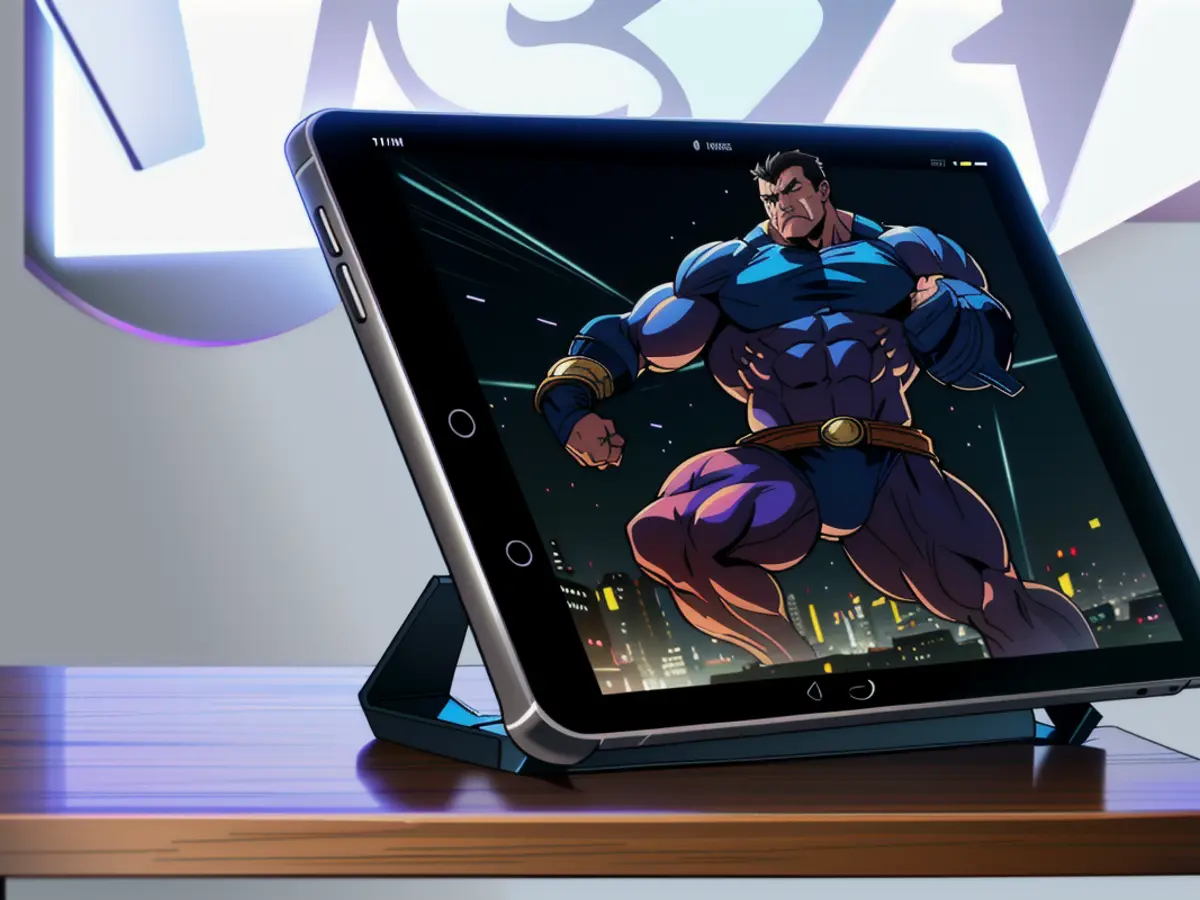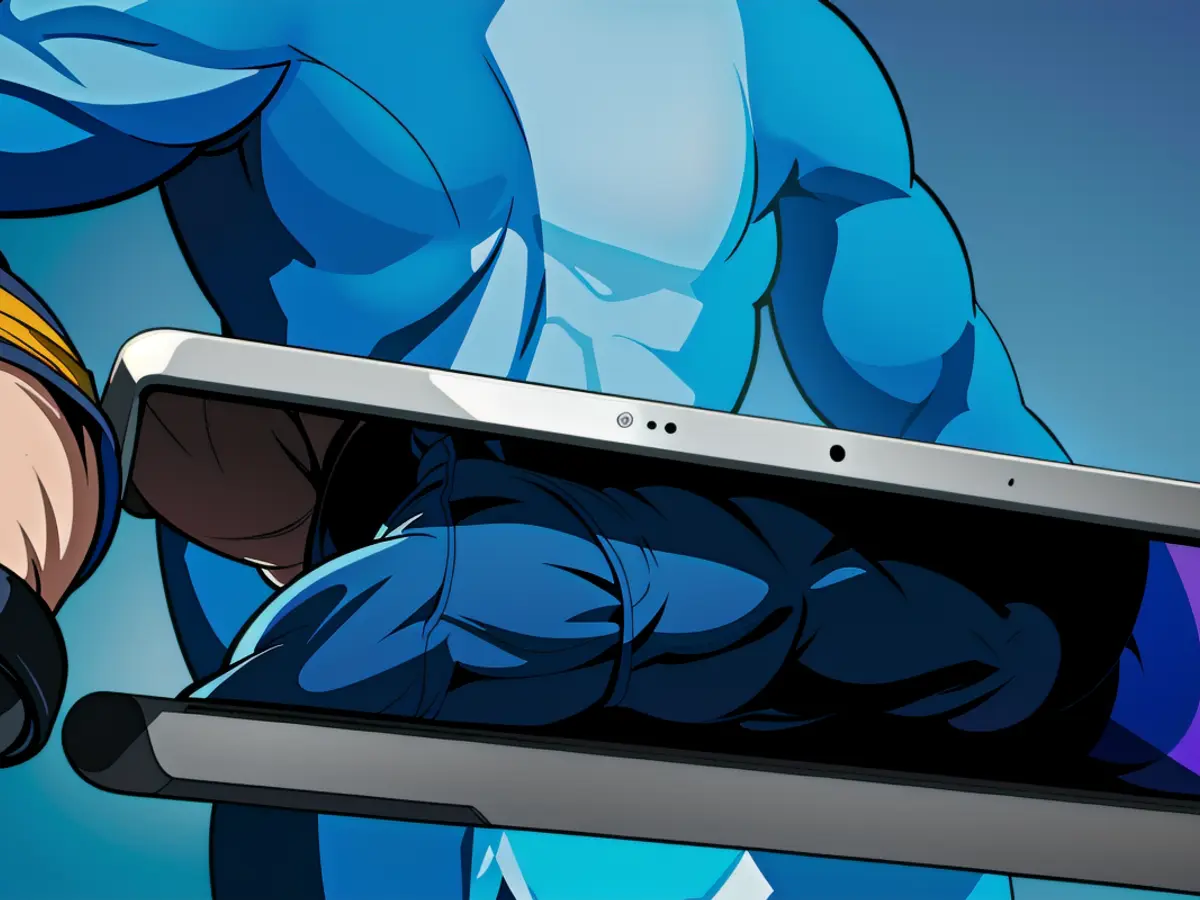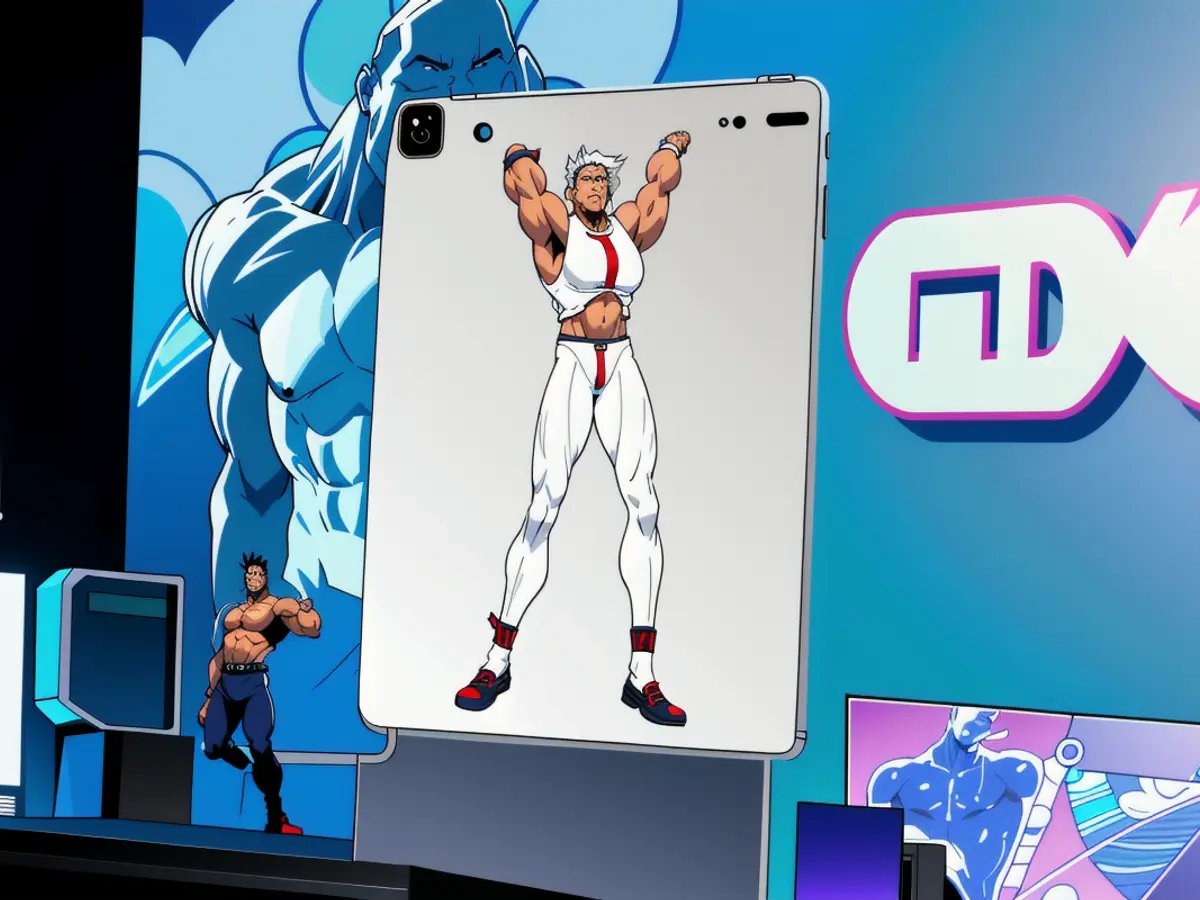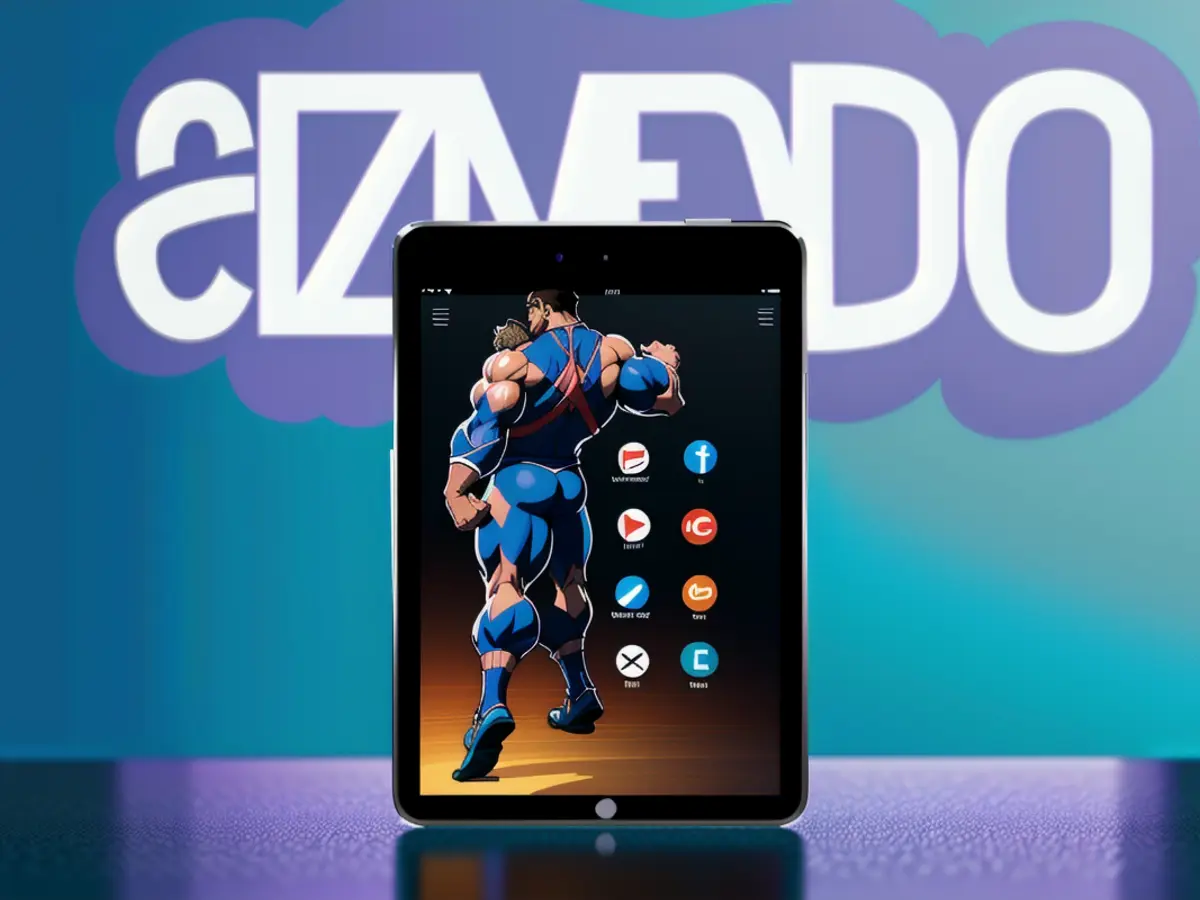Examining the iPad Mini 2024: A Detailed Assessment
More than ever before, the 7th-gen iPad mini bridges the gap between Apple's smartphones and tablets. It's not pocket-sized, but it's ideal for a small bag. The 8.3-inch display isn't for creating detailed sketches, but it's perfect for jotting down notes or using the latest Apple Pencils for minor photo editing. You could invest in a more capable iPad or go for a mini with a mini screen, which may work better with iPadOS than its larger siblings.
We're still conducting benchmarks and battery tests for our comprehensive review, but the iPad mini is worth examining, especially considering Apple's Intellectual Insights—set to debut on Oct. 28. So, imagine me, sitting at my desk, one hand holding the 13-inch iPad Pro M4, the other with the 6-inch iPad mini, due for release on Wednesday. Which one would I pick? I believe the iPad mini fits into my life better than a larger tablet with extra power, and while it's not revolutionary, this is the best mini we've seen in years. The only question is how much Apple's Intellectual Insights will impact how we use a mini iPad.
How can you compare the two? One starts at a whopping $1,300 for its size. It's Apple's thinnest, most powerful, and most expensive tablet yet. Contrasting this powerhouse, the humble mini begins at $500. It retains the same lightweight Air-like chassis as the 6th-gen iPad mini from 2021. This year, it boasts double the RAM—up to 8 GB—and 128 GB of base storage, matching last year's 64 GB for the same starting price. Given the retail price, it offers a better deal with the updated specs (though it's still pricey compared to the competition). More than ever, the iPad mini makes a compelling case for small tablets over gargantuan slabs.
iPad Mini 2024 Review: Design
© Photo: Adriano Contreras / Gizmodo
The iPad mini sports nearly the same chassis as the 2021 version. It's Air-like, which means it's 6.3mm thin—adequate for most tasks, although its wide bezels could be slimmer. Unlike the Air, it comes in fun colors like light blue and purple. My light gray review unit was so light it was almost colorless in certain light conditions. At first, I thought it was gray. Besides the new chip, the main advantage of choosing this year's iPad is its WiFi 6E connectivity and a USB-C port supporting data transfers up to 10 GB/s, double the speed of the 6th gen.
Although the iPad Pro set the bar for the latest Apple silicon, the M4 chip, the iPad mini 2024 houses an A17 Pro chip, the same processor found in the iPhone 15 Pro. Expect this new iPad to be faster than the 2021 model with its A15 Bionic CPU, but it's much the same experience. The iPad mini represents Apple's tablet in its most basic form but with the added compatibility with the Apple Pencil Pro—my personal favorite stylus.
Unfortunately, like all 2024 iPads, it's only compatible with the Pro and the new Apple Pencil USB. If you own a 2nd-generation or older Apple Pencil, it won't work with the new iPad. Apple explained that the M4 iPad Pro needed to redesign its connection point to fit its new slim form factor.

Unfortunately, the mini's front camera remains in the portrait position, likely because the Apple Pencil requires that space for its magnetic attachment point. The lack of compatibility with older Pencils is still a frustration for those considering an upgrade from the previous mini to the 7th-gen.
As for the cameras, they're nothing to write home about. There's a 12MP rear sensor and a 12MP ultra-wide front-facing camera. It's handy for spontaneous family photos, but let's be honest—no one buys an iPad for its camera, no matter the price. The front camera uses Center Stage, which adjusts the zoom level to keep you in frame. I tested it during a lengthy video call, and it worked well enough. However, I did notice a nearly 20% battery drain in 40 minutes when using video calling with the additional center-frame feature on Microsoft Teams.
You're still stuck with Apple's LCD, "Liquid Retinae," with its adequate brightness—nothing spectacular. We were fortunate enough to get our hands on Apple's AI capabilities with iOS 18.1 Beta, and while they improve the tablet experience, they don't fundamentally alter how you use your iPad.
With the Refresh, I noticed an improvement over the initial beta stages, yet it's not a one-size-fits-all solution for photo flaws. Similar to Google's Magic Eraser, it excels at eliminating background details, but it might struggle with objects in the foreground, occasionally leaving behind traces of objects or shadows. The user interface is straightforward; simply circle the object with your finger or Pencil, and Apple will automatically erase it. However, loading time is a drawback, as it takes some time to process after clicking the Clean Up button within the Photos app.
In terms of Writing Tools, I haven't found any necessity for the rewriting tools intended to make my emails sound more formal. However, the proofreading feature is quite good. It adjusts the sentences in my emails to correct comma splices. I must mention it's currently unavailable in Google Docs, but perhaps that will change in the future. Google is promoting its AI tools for Workspace apps.
Summarization can be advantageous, especially using the "Key Points" feature that transforms an email into bullet points. This feature does a commendable job of condensing lengthy product briefs, eliminating jargon, and making it more readable. Nonetheless, I still need to verify the AI's work by referring to the original text.
The new Siri interface presents a significant upgrade. Instead of the giant floating orb, Siri now appears as a vibrant, wavy border. Additionally, users can opt for text input through Siri, which is particularly useful in public spaces where asking questions aloud might feel awkward.

Apple’s upgraded Siri supposedly taps into the knowledge base of Apple's support pages and integrates it into a large language model. Although it can provide answers to general queries, I noticed it relies on internet sources rather than internal databases. This will likely change in the full release, but for now, using Siri is essentially the same as before.
Apple has augmented iPadOS, but not all of the new features are available on the mini iPad. For example, the mini iPad 2024 lacks the capacity to utilize Stage Manager on the smaller 8.3-inch screen for improved multitasking; it's limited to Split View.
Even on the 13-inch iPad, Stage Manager only partially addresses the lack of full-fledged macOS-like versatility. Even with Split Screen, smaller-screen iPads struggle to multitask effectively. Users can move multiple windows on the 6.2-inch display of the Samsung Galaxy Z Fold 6, although it could potentially be less intuitive on such a small screen. Nevertheless, I would appreciate having that option.
iPad Mini Review: Performance
© Image: Adriano Contreras / Gizmodo
The iPad mini utilizes a previous-generation mobile chip, the A18 Pro chip, which can be found in the iPhone 16 Pro. Although it should suffice for users who just need to complete basic tasks on a small iPad, this setup may fail to meet expectations of those seeking high-end iPad performance on a budget. I am slightly disappointed that this device is not equipped with Apple's top-of-the-line iPhone CPU.
The iPad mini with 8 GB of RAM performed satisfactorily on benchmark tests but didn't set any records, reflecting the chip's capabilities. It scored 700 points higher than the A15 in the single-core test and around 1,700 points higher in the multi-core test compared to the year 2021's A15 Bionic.

Although the mobile chip cannot compare to iPads with M-series silicon, it still offers better performance than the A17 Pro. In Geekbench 6, the iPad mini scored 3,000 points fewer in the multicore test. For 3D graphics performance in 3D Mark, the desktop-level CPU and GPU will outperform the A17 Pro distinctly. It's ill-advised to anticipate desktop-level performance from the iPad mini.
I conducted tests with demanding games like Death Stranding: Director's Cut and Resident Evil 4. Death Stranding played acceptably, with slightly cropped controls due to the base aspect ratio. It looks less appealing than on recent M3 MacBooks, iPad Pro, or iPad Air, but its playability remains unwavering, particularly with the use of a separate controller or another alternative like Razer Kishi.
However, Resident Evil 4 presented significant challenges. Its default aspect ratio was not optimized for the iPad mini's aspect ratio, and it suffered from lag with frequent screen tearing issues. The iPhone 15 Pro with the same chip fails to encounter these problems with an uninterrupted framerate, suggesting a compatibility issue. Ultimately, it's recommended to choose less demanding games for the iPad mini.
Nobody's gonna stop you from performing editing and graphics tasks on the iPad mini, but there are undeniably superior alternatives out there. It took twice as long to render the base Screws image in OctaneX on the iPad mini compared to the iPad Pro with M4. Fair enough, you can edit videos with Adobe Premiere on the iPad mini, but once you start getting complex, you'll inevitably run into a performance issue that the A17 Pro just can't manage. The mini's got its charms, but at $500, it's just not offering anything more than you'd expect from Apple.
iPad Mini 2024 Review: Battery Endurance
© Image Credit: Adriano Contreras / Gizmodo
Apple reckons the iPad mini's 5078mAh battery provides an "all-day" battery life of roughly ten hours. How long this lasts will depend on how you use it. I've seen it hold out for nine hours of consistent use. What constitutes consistent use, you ask?

If you're not actively using it, just keeping it within arm's reach and occasionally glancing at the screen, you can make it last a full five hours and see the battery drop by only 15%. When streaming videos and engaging in light tasks, it can last for ten hours. However, if you leave the screen on continuously, it won't last long. It falls short in comparison to the iPad Pro, which still exhibits admirable battery life even when used for more demanding tasks.
The battery life is essentially the same as the 2021 iPad mini. This diminutive iPad can connect to up to one external monitor via USB-C. My experience tells me that this will drain your battery, depending on the screen resolution. If you plan to use the iPad for its intended, limited purpose, you'll get the promised "all-day" endurance. However, if you need something more, a MacBook Air or MacBook Pro would be more suitable.
iPad Mini 2024 Review: The Tablet I'd Actually Use
© Image Credit: Adriano Contreras / Gizmodo
Despite its size, the iPad mini, paired with the Apple Pencil and the standard Apple folio, left me feeling satisfactory. I appreciated having a device small enough to type comfortably in landscape mode yet large enough for watching videos or jotting down notes. I don't need it to be anything extraordinary, which might be unfortunate news for Apple's AI aspirations.
Instead, the iPad mini acts as a loyal sidekick, co-existing with my MacBook, where I can focus on critical tasks. I use the little guy as a sidekick for notifications, checking the calendar, or, more honestly, watching YouTube when my brain is on the verge of exploding.
We're still conducting our full benchmarking and battery tests, and we'll update this review once we have the final results. For now, the iPad Pro or larger iPad Air are likely the Apple-branded tablets I'd immerse myself in, but the mini feels like the iPad I'd use on a daily basis.

Update 10/22/24 at 2:45 p.m. ET and 10/24/24 at 2:38 p.m. ET: This post has been revised to include our performance and battery test findings.
Given the release of Apple's Intellectual Insights on October 28, the iPad mini's future with these new features is worth considering. (future, iPad mini)
In comparison to the 13-inch iPad Pro M4, the lightweight and affordable 7th-gen iPad mini might be a more practical choice for everyday use. (iPad mini, more practical, everyday use)


